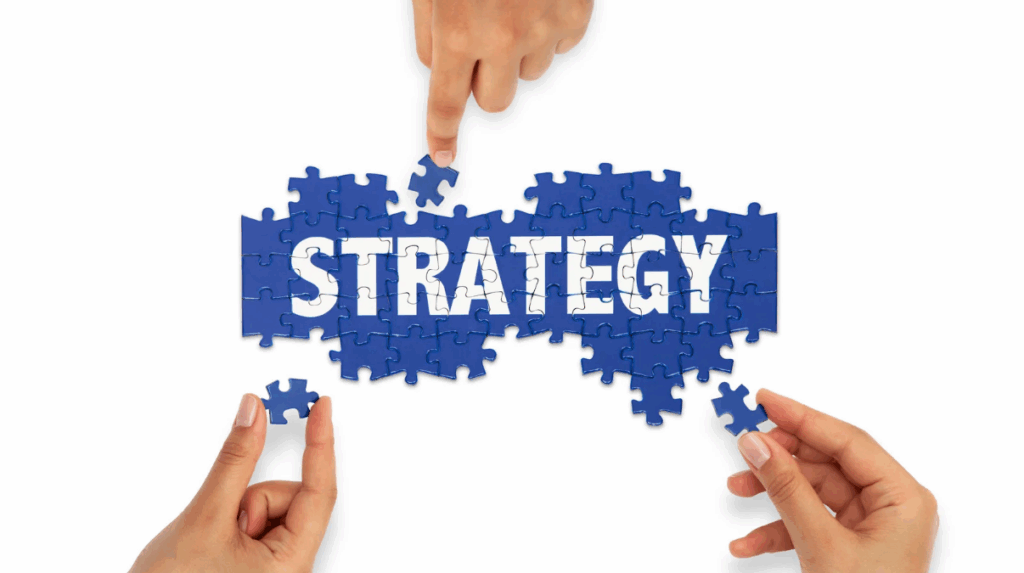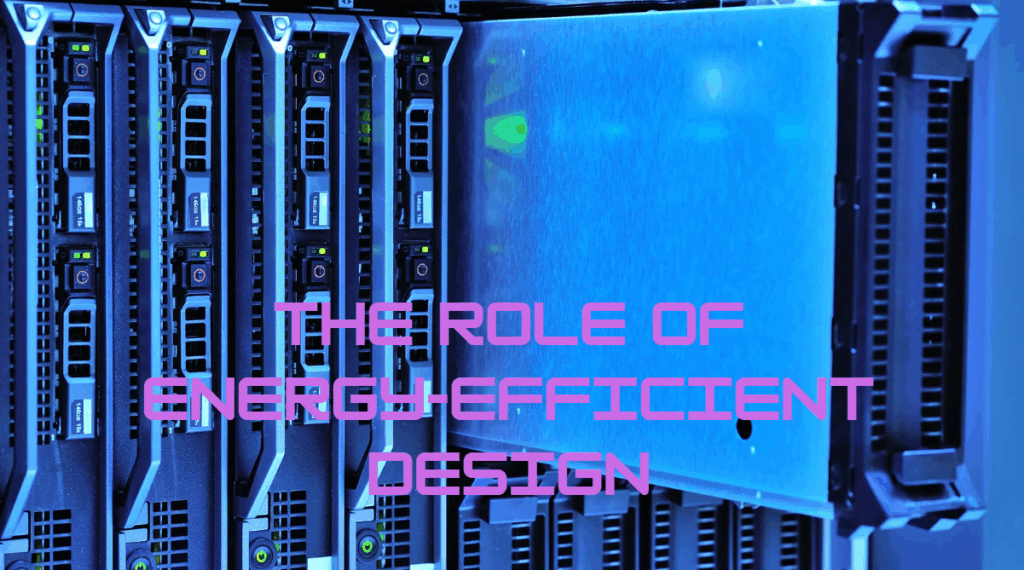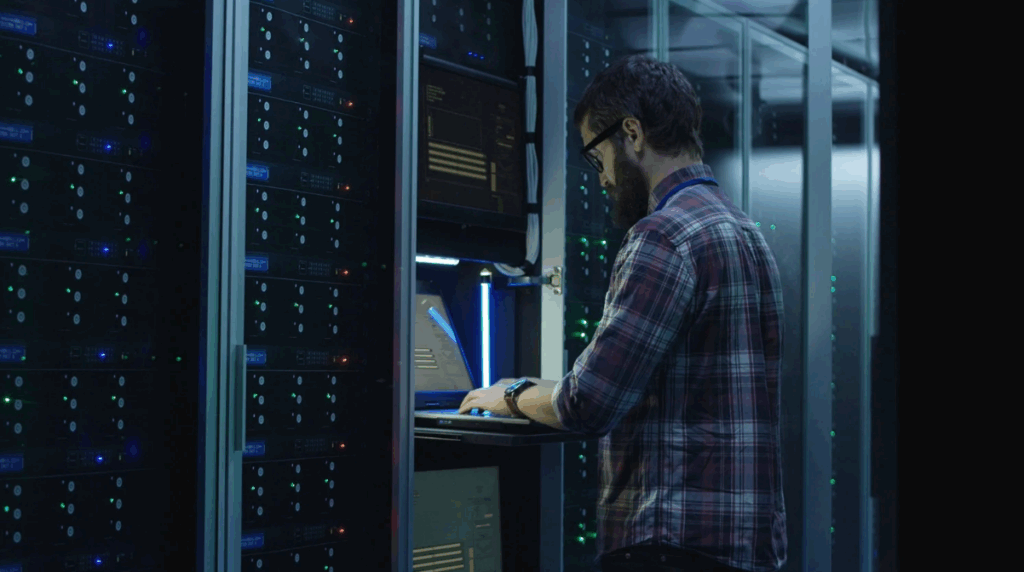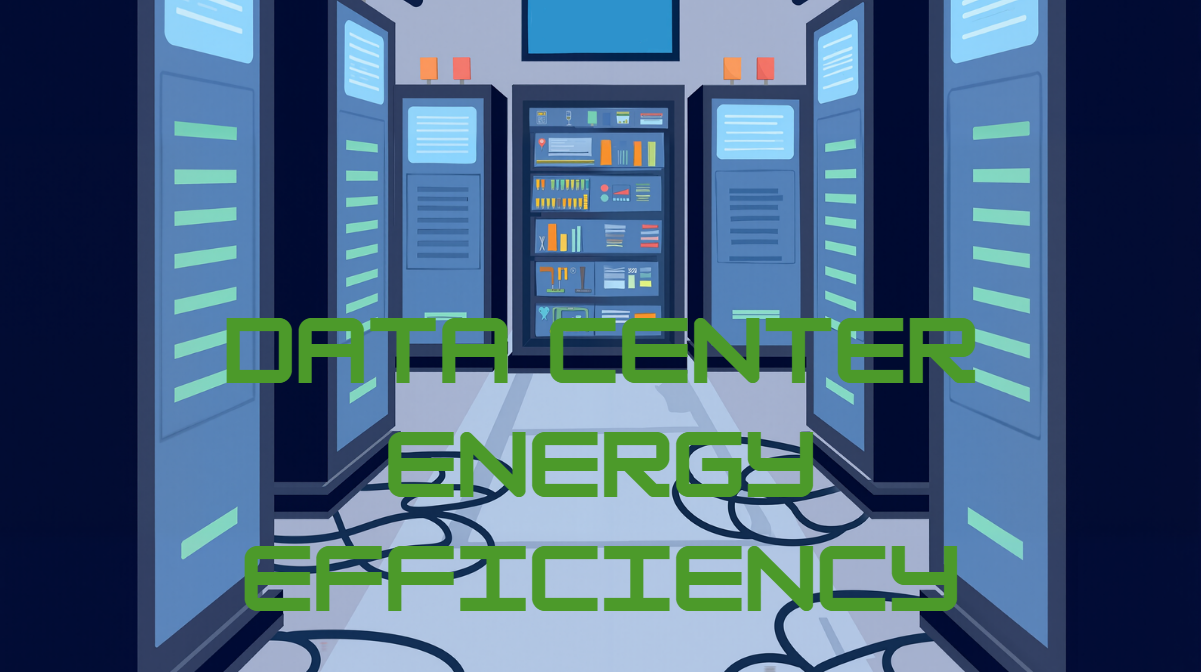Data centers are the beating heart of modern businesses. From cloud storage to enterprise systems, every byte of data relies on vast amounts of computing power and electricity. As digital demand grows, so does energy consumption — and with it, the cost of running and maintaining these facilities. For companies managing large IT environments, energy efficiency is no longer just a technical concern; it’s a financial and environmental priority.
This guide explores how businesses can enhance data center energy efficiency through practical, smart strategies that cut costs and power consumption. You’ll learn what energy efficiency truly means, why it matters, and how to design, operate, and maintain a data center that delivers high performance while minimizing environmental impact.
Improving Data Center Energy Efficiency
Data center energy efficiency refers to how effectively a facility uses electricity to power IT operations — servers, storage, networking, cooling, and lighting — with minimal waste. In simple terms, it’s about doing more computing work using less energy.
The industry-standard metric for measuring this is Power Usage Effectiveness (PUE), calculated as:
PUE = Total Facility Power / IT Equipment Power
A PUE of 1.0 represents perfect efficiency, meaning all energy is used for computing, with none wasted on cooling or infrastructure overhead. Most efficient modern data centers operate between 1.2 and 1.5, while traditional facilities often exceed 2.0.
Improving energy efficiency not only reduces operational expenses but also extends equipment life, supports sustainability goals, and enhances reliability. It ensures your infrastructure can scale to meet future needs without skyrocketing energy costs.
Common Causes of Energy Inefficiency in Data Centers
Before you can improve, you must identify what’s holding your data center back. Here are common culprits behind excessive energy use:
- Inefficient cooling systems: Poor airflow management, blocked vents, or mismatched cooling capacity can waste enormous amounts of power.
- Underutilized servers: Many data centers run servers at only 10–20% capacity, consuming full power with minimal workload.
- Outdated hardware: Legacy systems draw more energy and produce more heat than modern alternatives.
- Lack of monitoring: Without real-time visibility, inefficiencies go unnoticed until energy bills rise.
- Poor layout and airflow design: Improper rack arrangement or cable management disrupts air circulation.
- Power losses: Inefficient UPS systems and power conversions waste energy during transmission.
Recognizing these issues is the first step toward building a more sustainable and cost-effective operation.
Smart Strategies to Enhance Data Center Energy Efficiency

Building an energy-efficient data center doesn’t happen overnight — it requires a mix of design optimization, smart technology, and operational discipline. Below are proven strategies that make a measurable difference.
1. Optimize Cooling Systems
Cooling often accounts for up to 40% of a data center’s energy use, making it the top priority for improvement.
- Hot and Cold Aisle Containment: Arrange server racks in alternating rows of hot and cold aisles. Containment systems separate airflow, preventing cool and warm air from mixing, thus improving cooling effectiveness.
- Free-Air or Liquid Cooling: Take advantage of natural air temperatures (free-air cooling) or high-efficiency liquid cooling systems that remove heat directly from servers.
- Monitor Temperature and Humidity: Follow ASHRAE guidelines, keeping temperatures between 18°C–27°C. Overcooling wastes energy and increases costs.
- Regular Maintenance: Clean filters, seal leaks, and organize cables to maintain consistent airflow.
Efficient cooling not only saves energy but also reduces wear on equipment, improving uptime and longevity.
2. Implement Server Virtualization and Consolidation
Underutilized servers are silent energy wasters. Virtualization allows multiple virtual machines (VMs) to run on a single physical server, maximizing resource usage.
- Reduce Hardware Footprint: Fewer physical servers mean less energy for power and cooling.
- Dynamic Workload Management: Use software to automatically allocate resources and power down idle systems.
- Simplify Maintenance: Virtualization also improves scalability and simplifies disaster recovery.
By consolidating workloads and retiring outdated hardware, companies can reduce power consumption by up to 40%.
3. Upgrade to Energy-Efficient Hardware
Modern IT hardware is increasingly designed with energy performance in mind, making hardware upgrades one of the most effective ways to reduce overall power consumption. Replacing outdated or inefficient systems can deliver immediate energy and cost benefits.
- Energy-efficient servers and storage systems: New-generation equipment consumes less power during both operation and idle time, helping lower total energy demand.
- Solid-State Drives (SSDs): Compared to traditional hard drives, SSDs operate faster, generate less heat, and require less energy to run.
- High-efficiency power supplies: These reduce energy loss during power conversion, ensuring more of the electricity drawn is used productively.
- Modular UPS systems: Scalable uninterruptible power supplies adjust capacity according to demand, preventing unnecessary energy draw from underutilized systems.
While upgrading infrastructure requires upfront investment, the long-term gains—lower energy costs, improved performance, and reduced maintenance needs—quickly outweigh the initial expense. Over time, efficient hardware also supports more sustainable and resilient data center operations.
4. Improve Power Distribution and Management
How power flows through your facility directly affects efficiency.
- Use Intelligent Power Distribution Units (PDUs): They provide real-time monitoring and allow remote shutdown of unused outlets.
- Minimize Conversion Losses: Reduce the number of times electricity changes form (AC to DC or vice versa).
- Adopt High-Efficiency Transformers: Select components with minimal power loss.
- Monitor Circuit Loads: Balance loads to prevent energy waste and improve safety.
Smart power management ensures every kilowatt contributes to productive output.
5. Adopt Intelligent Monitoring and Automation
Data-driven management is the backbone of an efficient facility.
- DCIM (Data Center Infrastructure Management): Provides visibility into power, temperature, and performance metrics in real time.
- AI-Driven Analytics: Predict energy spikes and automatically adjust cooling or load distribution.
- Predictive Maintenance: Detect and resolve inefficiencies before they lead to energy waste or downtime.
- Automated Lighting and Cooling: Sensors can dynamically adjust conditions based on activity and temperature.
Monitoring tools transform raw data into actionable insights, enabling proactive control over every watt consumed.
6. Design for Scalability and Flexibility
Data centers are long-term investments. An efficient design should accommodate future growth without overbuilding.
- Modular Architecture: Build in phases — add capacity as demand increases.
- Flexible Power and Cooling Systems: Allow for incremental expansion instead of full-scale retrofits.
- Standardized Cabling and Layouts: Simplify upgrades and maintenance, minimizing downtime and disruption.
Designing for scalability ensures sustainable operations that adapt to business needs without wasting resources.
7. Incorporate Renewable Energy and Sustainable Practices
Sustainability isn’t just good for the planet — it’s good for business. Many organizations are transitioning toward green data centers that utilize renewable energy sources.
- Renewable Energy Integration: Install solar panels, purchase wind power, or use renewable energy credits (RECs).
- Energy Storage Solutions: Use batteries or thermal storage to balance demand and reduce reliance on the grid.
- E-Waste Recycling: Implement proper disposal and recycling programs for old hardware.
- Sustainable Facility Design: Use energy-efficient lighting, insulation, and materials with low carbon footprints.
A commitment to renewable energy demonstrates environmental responsibility while reducing long-term operational risks.
The Role of Energy-Efficient Design in New and Existing Data Centers

Design plays a crucial role in achieving energy efficiency. For new facilities, energy optimization starts at the blueprint stage — from building orientation and insulation to airflow patterns and power distribution planning.
For existing data centers, retrofitting offers opportunities for improvement without major reconstruction. Adding containment systems, upgrading to efficient cooling units, and optimizing layout can dramatically lower PUE values.
Whether designing or upgrading, the goal is the same: a balanced ecosystem where power, cooling, and IT operations work in harmony.
Measuring and Benchmarking Data Center Energy Performance
To improve, you must measure. Metrics provide a clear picture of where energy is going and how efficiently it’s used.
- PUE (Power Usage Effectiveness): Measures total energy vs. IT equipment energy.
- DCiE (Data Center Infrastructure Efficiency): The inverse of PUE, expressed as a percentage.
- CUE (Carbon Usage Effectiveness): Evaluates the carbon footprint per unit of energy.
Regular energy audits and smart metering reveal inefficiencies and track improvements over time. Benchmarking against industry standards allows organizations to set realistic goals and demonstrate accountability in sustainability reports.
Long-Term Benefits of Energy Efficiency
Investing in data center energy efficiency produces both immediate and lasting rewards:
- Lower Operational Costs: Reducing power and cooling expenses delivers substantial savings.
- Extended Equipment Lifespan: Efficient systems reduce strain, lowering maintenance and replacement costs.
- Improved Reliability: Stable environments mean fewer outages and performance issues.
- Sustainability and Compliance: Aligns with corporate ESG goals and regulatory requirements.
- Brand Reputation: Businesses that prioritize sustainability attract more partners, clients, and investors.
Efficiency isn’t just an environmental choice — it’s a strategic business advantage that fuels long-term growth.
Partnering with the Right Data Center Solutions Provider

Achieving meaningful energy efficiency requires both technical expertise and hands-on experience. Partnering with a trusted provider ensures your systems are not only optimized but future-ready.
When choosing a data center solutions partner, look for:
- Proven expertise in design, installation, and maintenance.
- Customized strategies that align with your operational goals.
- Advanced technologies for cooling, power management, and monitoring.
- Commitment to scalability and sustainability.
A professional installer understands the nuances of balancing performance, security, and efficiency — creating an infrastructure that supports business growth while minimizing energy consumption.
At Efficient Lowvolt Solutions, we design and implement data center systems built for the future — secure, reliable, and energy-smart. Our tailored solutions ensure that your facility meets today’s performance demands and tomorrow’s sustainability standards.
Final Thoughts
Enhancing data center energy efficiency isn’t just about cutting power bills — it’s about building smarter, greener, and more resilient infrastructure. As technology evolves, so do opportunities to optimize how we manage energy, cooling, and computing resources.
By implementing the right strategies — from virtualization and intelligent monitoring to renewable energy integration — businesses can significantly reduce costs, boost performance, and support global sustainability goals.
Investing in energy-efficient design today creates a data environment that’s not only powerful and reliable but also responsible and future-proof. The smartest data centers aren’t just connected — they’re efficient by design.

